- Getting to the gate -
19th - 27th March 2012
Kuantan - Cherating – Marang – Tasik Kenyir – Kuala Koh
2947km – 3305km
Resorting to riding to rest
We all have limits. Christ knows our very first day on this trip was
spent cycling almost to the point of exhaustion, to the point that we
were actually shaking and felt sick. A month later I wound up
physically defeated after our five day push from Yogyakarta to
Ciapanas in Java. You know, it got to the point where my body just
wouldn't work the way it should; weak legs, fuzzy head. Suffice to say,
rest days are essential, and we value them enormously.
So, the morning after we had cycled 145km into Kuantan on the east
coast of Malaysia we woke up in a dingy grey concrete room, lying on
a mattress about as thick and comfortable as a piece of ryvita. We
were on the edge of town, and although Kuantan wasn't exactly
unpleasant, it wasn't the kind of place we wanted to spend our two days off in either. Besides, we had a hunch that there would be some nice
beaches not too far away. After a small breakfast, some quick
internet research, and going against the desperate pleas from our
exhausted legs, we set off north out of the city to find one.
 The internet had yielded some information about a backpacker
friendly resort called Cherating that apparently lay about 30km north
of Kuantan. The lady at the hotel reckoned it was more like 20km.
After an hour's riding out of the city we passed a sign that said we
still had another 40km to go. And so, what was supposed to be a
relaxing day of hardcore lethargy became a hot afternoon ride on very
tired legs.
The internet had yielded some information about a backpacker
friendly resort called Cherating that apparently lay about 30km north
of Kuantan. The lady at the hotel reckoned it was more like 20km.
After an hour's riding out of the city we passed a sign that said we
still had another 40km to go. And so, what was supposed to be a
relaxing day of hardcore lethargy became a hot afternoon ride on very
tired legs.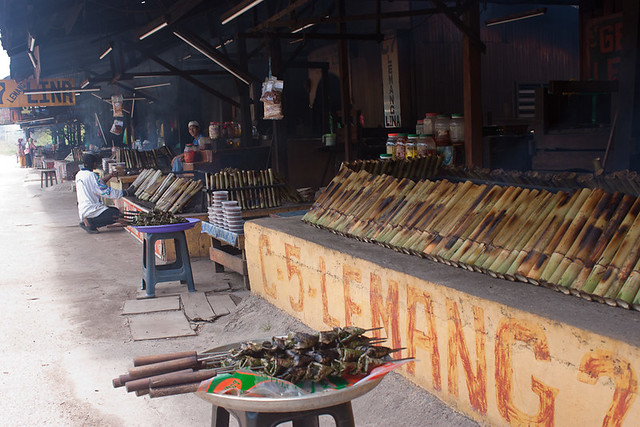 The east coast of Malaysia lacks the big settlements of the west,
and is much more sparsely populated as a result. The road was narrow,
like a country lane back home, and the villages spread themselves
thinly along the way; a house here, a shop there, a fruit stand
further on, all laid out beneath a dazzling cloud flecked sky.
The east coast of Malaysia lacks the big settlements of the west,
and is much more sparsely populated as a result. The road was narrow,
like a country lane back home, and the villages spread themselves
thinly along the way; a house here, a shop there, a fruit stand
further on, all laid out beneath a dazzling cloud flecked sky.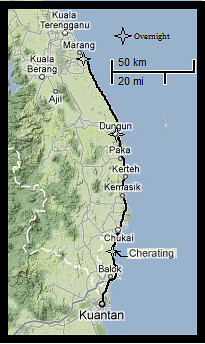 |
| Kuantan - Cherating - Dungun - Marang |
We found ourselves a smart wooden chalet beside a pond in a loping
green garden by the sea, and booked ourselves in for three nights.
Except for the evening assault of mozzies the place was remarkably
serene and beautiful. Making the effort to get out of our nondescript
concrete hotel in the city and come out here made a big difference,
these were two days off of the highest quality, and like I say, we
think it's very important to get a decent day's rest. Reading by the
pond, paddling around in the jacuzzi-hot sea, and eating out for
breakfast, lunch and dinner; yeah, it was pretty decent all right.
Schroedinger's Road
After our gold standard double day off in Cherating we set off up
the coast road, due north once more, but although we were well rested
and feeling fit, all was not well. There was a large grey lump of
uncertainty ahead.
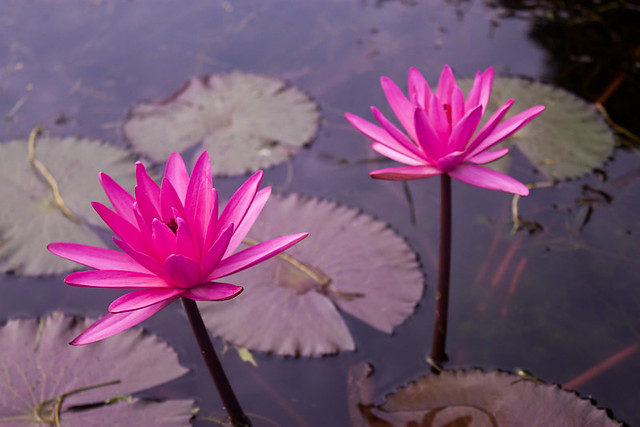 The next leg hinged on a Schroedinger's cat of a road that was
marked on our map as a highway under construction, but which was
entirely absent from google maps. If the highway was completed then
it would take us inland and over a lake to the back entrance of Taman
Negara National Park. If the road was not completed though we would
have to travel several hundred kilometres north to the next turn off
and endure something like an extra 500 kilometres of riding in order
to get to the park, which would suck.
The next leg hinged on a Schroedinger's cat of a road that was
marked on our map as a highway under construction, but which was
entirely absent from google maps. If the highway was completed then
it would take us inland and over a lake to the back entrance of Taman
Negara National Park. If the road was not completed though we would
have to travel several hundred kilometres north to the next turn off
and endure something like an extra 500 kilometres of riding in order
to get to the park, which would suck.
Despite the uncertainty the ride up the east coast was relaxing and
very pleasant. We hugged the coast pretty much the whole way, so
during our midday cool-down lunch breaks we had the opportunity to
splash around in the sea. I have to admit I'm not usually one for
swimming. I never really got into it and Jaws did lasting
damage to my sea-enjoyment gland. But confronted with the tawny
beaches, pacific-blue water, and prospect of a refreshing salty bath
at the height of the heat of the day, it didn't take Liv long to
persuade me to jump in.
* * *
It was mid-afternoon on our second day riding after Cherating when
we passed a large green sign pointing the way to a highway, recently
constructed, that would take us west over the lake. What a relief!
Not only did it free us from the prospect of an additional 500km
detour, but it meant that we were about as far north up the east
coast as we needed to be. Time to stop for the day.
Just a few kilometres up the road we came to a long stretch of beach
populated by restaurants and chalets. This place was a bit more
grizzled than Cherating, overfull with wooden restaurants and
sprinkled with litter, but despite the high-tide line of polystyrene,
the beach wasn't all that bad. The chalets here were very basic
concrete rooms though, lined up around a gravel car park. I don't
think they could technically be called chalets at all really since
there was nothing chalet-y about them, and with their fake
leopard-print bed linen they looked more like by-the-hour motel
rooms. But chalet's what the sign said, and they were cheap so we
took one.
Although the beach was a bit grubby, the sea was the clearest we'd
encountered since Bintan, clear enough for us to watch a stingray
sail past as we ambled along the beach. We decided to spend another
day off here, and why not? It is very important to rest you know.
Tasik Kenyir
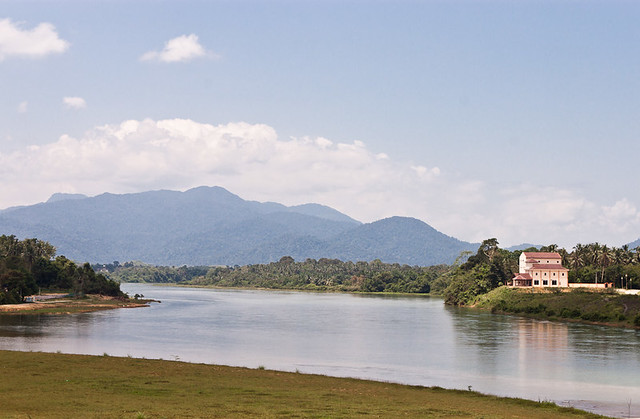 The ride to the lake was nice, beginning with undulating rural lanes
which gave way to bridges over fat rivers fed by the distant lake.
Tasik Kenyir, as this great big lake is known, is the largest
man-made lake in South East Asia. It lies like a massive jagged
amoebae up in the hills, surrounded by trees, with the tips of the
old peaks serving as its forested islands. Something of the Scottish
Highlands about it, particularly the cruel uphill pedalling required
in order to get there.
The ride to the lake was nice, beginning with undulating rural lanes
which gave way to bridges over fat rivers fed by the distant lake.
Tasik Kenyir, as this great big lake is known, is the largest
man-made lake in South East Asia. It lies like a massive jagged
amoebae up in the hills, surrounded by trees, with the tips of the
old peaks serving as its forested islands. Something of the Scottish
Highlands about it, particularly the cruel uphill pedalling required
in order to get there.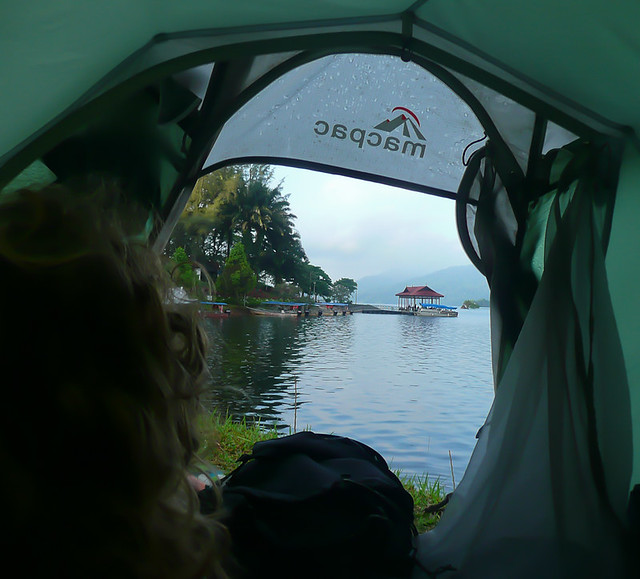 |
| Lakeside view from our tent, lovely! |
The lakeside was fairly quiet, with only a few groups of Malays
camping, and the odd tour group departing from the jetty. We put our
tent up, and then splashed around in the chilly water to cool down,
before towelling off and heading back up the road to the restaurant
for dinner. We were the only people eating, and so we got to enjoy
splendid food with the swift service that comes when the waiting
staff outnumber the diners three to one.
We pored over our map as we ate our dinner, and realised that we
still had quite a way to go to get to the park entrance. The highway
ran east for well over 150km until it reached the turning, but then
the entrance to the park was still another 60km away. This meant that
it could take us up to three days to reach the park, and there was
only one village marked on the map the whole way. We were in good
spirits and confident though, since we were well stocked with food
and water, and relaxed after so much beach-time over the last week.
To give ourselves a chance of making it across the lake to the
village in one push though, we decided that we'd get up really early
the next morning to secure a long, far ranging day in the saddle.
 |
| When it's hammering it down with rain, spending an hour undercover, fixing a puncture isn't so bad. |
We finally got going at around 1pm, but then had to stop within ten
minutes of riding to make some adjustments to Liv's gears that had
been knocked from their sweet spot when we'd fixed the puncture
earlier. It was the least early start we'd had in a long time, but
since we didn't have to be anywhere at any particular time, and could
feed ourselves for three days, we were in no rush. Being organised
but flexible, and taking each day as it comes gives us a sense of
freedom that's rare to find these days. Knowing we can just pedal
down this road and take one day, or three days, we can camp if we
want, or we can turn around and carry on up the east coast instead.
It's enormously liberating. We recommend it.
 |
| Marang - Pangkalan Gawi - Elephant Sanctuary - Kuala Koh |
Sanctuary
 |
| A hornbill |
When we finally got down to it, the ride along this almost deserted
highway was excellent. The views of the lake were great, it was a
nice mix of up and down, and the dense rainforest scattered along the
sides was home to an array of impressive looking birds such as the
hornbill, along with many other unidentified species.
The weather gods heard our prayers about cooling things down a bit,
so from 4pm it rained heavily right up until we pulled over at 6pm.
We had arrived at an elephant sanctuary that lay beside the highway,
so we wandered in to ask permission to camp on the patch of grass
outside. The workers there were very friendly, and they insisted we
camp inside the perimeter before making us a nice hot cup of tea.
Mmm!
From what we saw of it the sanctuary was a simple affair, with a
small office, a sleeping block, toilet, and a large roofed area, like
a bus station with two adult elephants stood side by side beneath it.
Set beside them was an enclosure for the baby elephant that paced up
and down inside it's three concrete walls and waved its trunk at us
as we passed the heavy green bars at the front.
We spoke to one of the workers briefly about the operation, and were
told that they were contacted whenever an elephant was causing
problems for a village, then they would come and collect the
elephant, bring it here, and train it to become a work animal. Not
exactly what I would call a sanctuary, although I don't want to be
damning of them because we didn't get the full picture and it was
suggested that some of them are released back into the wild, but when
and how was unclear.
Although the staff seemed to have a good relationship with the
animals, slapping them cheerfully on the bellies, blowing down their
trunks and talking to them, it was hard to ignore how agitated the
two adult animals looked the rest of the time, held on their very
short chains, endlessly toying with their food and rocking back and
forth. The baby had nothing to do in its cage but walk up and down
and try to attract the attention of anyone who passed, and it had to
spend every night alone, curled up in the corner. Once the initial
glee of finding ourselves camping right beside these impressive
animals had passed, we couldn't shake how upsetting it was to see
them so far removed from their natural habitat and confined like
this.
 |
| The baby elephant sorely wanted company. |
The bitter irony in all this is that work elephants are used to
clear land, so these guys might well be trained to tear down the
habitat of other elephants, who will in turn be forced into close
proximity with villages, who will report them to the authorities, who
will take them away, train them, and the cycle goes on and on.
A thrill without any pang of guilt was to be found lurking in the toilets after hours though (not like that, you rogue!). Lured down from the trees by the fluorescent lights, a whole panoply of monstrous bugs found themselves trapped in the toilets, ready to startle, amaze, or put the fear of god into any unsuspecting midnight urinators.
We bumped into moths the size of our hands, grasshoppers that dominated the sink, and the shiny black bulk of
an Atlas beetle, one of the biggest beetles in the world. Well,
actually this one was dead, and had apparently died just because it
had landed on its back and been unable to get back up – biggest and
most pathetic beetle ever - but the next morning the cat swatted
another one out of the air so we got to see a dazed living specimen.
 |
| An Atlas beetle. They're very slow, not very bright, and die if they fall on their backs, but they are massive. |
We were a bit more organised the next morning and left before sunrise. We made our way along the highway, leaving the lake behind us, and heading into yet more landscape traumatised by palm oil. Seeing the towering, dense, and obviously extremely biologically diverse rainforest that had been with us for much of the previous day suddenly give way to hillside after scarred hillside of this one, lucrative tree was shocking.
But the horror of seeing such a devastated landscape was soon to be
sidelined by a peril wholly unexpected by either of us as we rode
down the quiet, palm lined road. We pedalled along, and pulled over
for a cup of tea in a dusty little warung that appeared by the side
of the road. We relaxed, nodding polite good morning's to the few oil
palm workers eating their breakfast, who nodded and smiled back. We
purchased another 6 litres of water to top up our dromedary bags, and
we were pretty well prepared for the rest of the day, so we set off
again. We had been riding for only a few minutes when we became aware
that we were being watched. At the edge of the plantations to our
left, just up off the road along a ridge, were a herd of cattle. What
they were doing in the middle of an oil palm plantation we had no
idea, but we thought it only proper to bid them good morning by
mooing at them, as you do.
Several of them leapt to their feet, and all eyes were on us as we
rolled by, our moo faltering from its initial gusto. We kept our eyes
on them, feeling a little nervous ourselves now as the rest of them
got to their feet, and staggered nervously about. In a matter of
seconds they all broke into a gallop, matching our speed, and then
overtaking us. Realising immediately that this could be a serious
problem for us we both began pedalling furiously. The cows, many of
them we noticed with sharp slender horns, were dashing all out now,
still moving in the same direction as us but going much quicker than
we could possibly manage. 40, 50kmph. It sounds absurd to speak of
cows moving so fast, and we had no idea they could do it, but there
they were, a blur of hooves and horns racing past us along the ridge.
The road had been on a slight incline, but thankfully it eased down
now, while the ridge the cattle were bolting along descended sharply.
The track was too steep for them to gallop down, but it was leading
them down right onto the road towards us. We took the opportunity to
overtake, and sped off down the hill, looking back to see them
clattering off the ridge on uncertain hooves, growing smaller and
smaller as we sped away.
We gasped a few nervous laughs, relieved that they were behind us,
and completely stunned by the fact that we had just been, apparently,
pursued by cattle. I stopped to snap a photo of part of the herd that
had now crossed to the other side of the road, until I realised with
horror that the other half were still on our side and were racing
straight for us, one hundred metres and closing.
 |
| Just after snapping this photo, I realised the rest of the herd was still charging right for us! |
I took off down the hill again to catch up with Liv. The road now
tilted up slightly but we had a good lead on them, and once we hit
the top and descended the other side we were pretty sure we were out
of danger. Suddenly another flurry of cows leapt up from the side of
the road, beady black eyes looking this way and that. We had just
enough time to mutter an “uh-oh” when this new herd began bolting
alongside us as well. They were at road level already, and got up to
our speed in seconds. I noticed a concrete drainage trench that
bordered the grassy strip that the cows inhabited and assumed that
this would keep them from coming onto the road. I have since modified
my estimation of cows' athletic abilities..
The leaders of the stampede leapt over the trench just ahead of us
like obese and ungainly impala. They were much faster than us, but in
front of us now, so all we could do is stop and watch as the whole
herd, twenty strong, sprang over this two foot gap and charged over
the road. A metal strip guarded the plantation on the other side, but
they just hurdled that too.
Cows, hurdling.
All but two made it over. The final couple trotted up the road a
little way, but then they turned and began to jog back towards us.
They had horns, and it looked to be an aggressive, if nervous move on
their part. A couple of cars drove past which agitated them further,
while we heard a thunderous drumming of hooves in the plantation to
our right where the rest of them now dashed about wildly. Were they
coming back to us? Trying to flank us? (All bets were off at this
point) And what was going on with the first herd behind us?
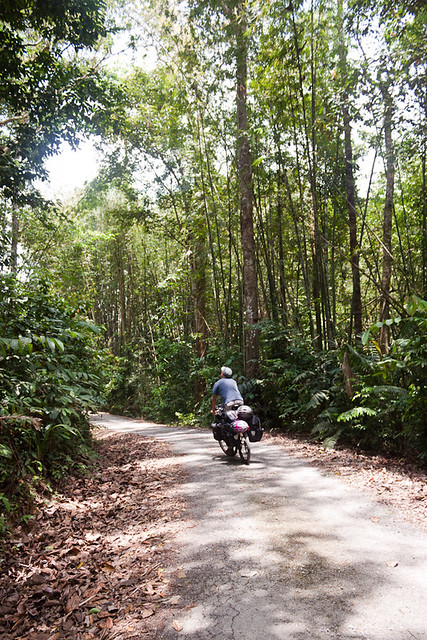 |
| Almost there... |
We quickly pedalled up the rest of the incline, so we would be able
to get away quickly if any of the herds came back, but as we reached
the brow we saw a sign for the national park, 70km ahead of schedule.
A short cut! Fizzing with adrenaline we followed the road as it
weaved up and down through 15km of palm oil tracks under a punishing
midday sun. After a couple of incredibly hot hours cycling, the track
broke down into a pebble strewn lane surrounded by dense, looming
vegetation. We rounded a corner and there it was, the Kuala Koh
entrance to Taman Negara.
- Jungle Fever -
27th March - 2nd April 2012
Kuala Koh - Taman Negara - The High Hide
Taman Negara
At over 4'300km2 Teman Negara is Peninsular Malaysia's
largest national park, but it's real ace card is that it is the
oldest rainforest in the world, at 130 million years. By my
calculations that means their should be dinosaurs in it, but
apparently it doesn't work like that. (Thousand kilometre detour, no
fricking dinosaurs) Thanks to its size it is an enormously important
habitat for many of the endangered animals in Malaysia; Malayan
Tigers, Sumatran Rhinoceros, Asian Elephants, along with many, many
less well known creatures such as Malayan Gaur (a bull that puts the
Minotaur to shame), Pangolins (little mammals that look like
pinecones) and Pelanduk (minuscule little deer no bigger than a
kitten).
The park entrance was tidy and well set up, with a large main
building housing the information desk and restaurant, with staff
quarters on the other side of the carpark, and a host of chalets
tucked away beneath some trees down the way. These chalets were
incredible. They had steps leading up to a front veranda, and then
inside they had high ceilings, wooden floors, and plenty of space. We
felt like we had wandered into some turn of the century novel, and
could just imagine sitting out the front at night in our best evening
wear, with a glass of whiskey and a pipe, regaling our associates
with tales of our jolly close shave with the cattle.
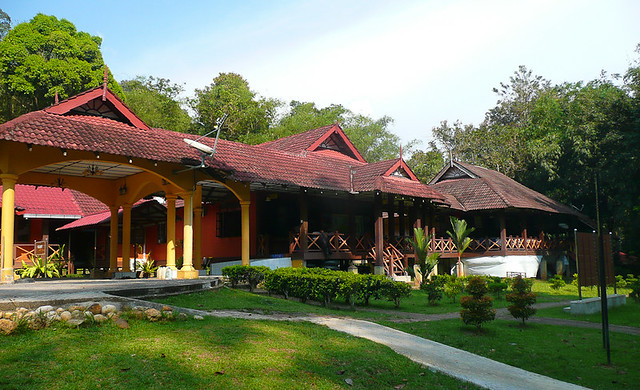 |
| The restaurant and information centre |
 |
| This Phasmid has got to be one of the most amazing things we've ever seen. Incredible. |
After a day of relaxing and poking around in the bushes by the hut
we were eager to get into the jungle. It was guarded by a wide, fast
flowing river, so the only way in was by crossing the suspension
bridge that swayed high above the water in true Indiana Jones style.
Almost as soon as we made it over we came across a gargantuan spider
hiding in her burrow, and then just a few steps further was a
motorway of ants, thousands of them, coursing in busy, neat lines
that zig-zagged across roots, over the path and off into the jungle.
We walked slowly along the track, surrounded by creepers and waxy
plants, with trees towering over us and shading us from the sun's
rays. Our cameras were working overtime, clicking away at all the
insects and spiders that lived out their lives in this shady, wet
realm beneath the canopy.
Spotting larger animals in the rainforest is unfortunately not quite
so easy. You don't survive very long in this environment unless you
are an expert at keeping out of harms way. Two excited humans
stomping along the path was sure to scare off even the dopiest of
mammals, so if we wanted to see any of the bigger beasts, we'd need
to change tactics.
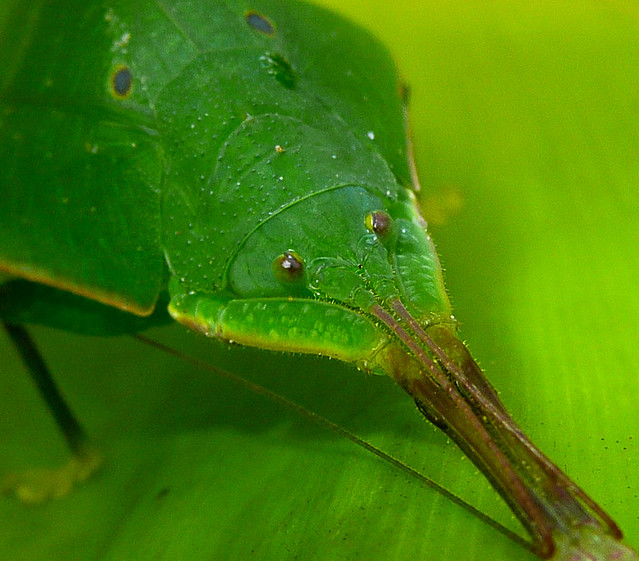 The Kuala Koh entrance to Teman Negara is apparently the least
visited of all the four entrances into the park, thanks to the fact
there is no public transport going here, and there are entrances
closer to all the larger cities. To give you an idea, we saw less
than 10 tourists over the whole week that we stayed, and on our first
day in the jungle, crunching our way down the track, we were the only
visitors. We had the whole place to ourselves.
The Kuala Koh entrance to Teman Negara is apparently the least
visited of all the four entrances into the park, thanks to the fact
there is no public transport going here, and there are entrances
closer to all the larger cities. To give you an idea, we saw less
than 10 tourists over the whole week that we stayed, and on our first
day in the jungle, crunching our way down the track, we were the only
visitors. We had the whole place to ourselves.
Being the only two people in a dense rainforest might not strike all
of you as being a particularly good thing. You will recall that the
majority of Malaysia's tigers live here, along with leopards and
bears. As we walked along, just the two of us, it was easy for our
minds to wander, and imagine watchful eyes following us, waiting for
the right moment to pounce...
 As it happened, something was following us, and it was out for
blood. It lay hidden from view, and began moving silently towards us
long before we even suspected it of being there. We plodded noisily
on, and didn't hear or see a thing as it lunged out from the
undergrowth.
As it happened, something was following us, and it was out for
blood. It lay hidden from view, and began moving silently towards us
long before we even suspected it of being there. We plodded noisily
on, and didn't hear or see a thing as it lunged out from the
undergrowth. The leech's jaws connected with my flip flop, and it hauled itself
aboard and hooped its way over to the juicy bit between my toes.
Anaesthetising as it went, the bite went unnoticed, and thanks to its
anti-coagulant spit the blood would keep flowing for hours. More
leeches came. They are everywhere in the jungle, and by the time we
thought to check ourselves we both had half a dozen hanging on to our
feet and shins, swelling up with our blood. They're not very pleasant
creatures of course, but I have to take my hat off to anything that
small, slimy and slow that can make a living off drinking the blood
of jungle mammals that the two of us couldn't even see, let alone
sink our jaws into. Moving faster now to reduce the chance of leeches
latching on, we ventured deeper into the jungle.
The leech's jaws connected with my flip flop, and it hauled itself
aboard and hooped its way over to the juicy bit between my toes.
Anaesthetising as it went, the bite went unnoticed, and thanks to its
anti-coagulant spit the blood would keep flowing for hours. More
leeches came. They are everywhere in the jungle, and by the time we
thought to check ourselves we both had half a dozen hanging on to our
feet and shins, swelling up with our blood. They're not very pleasant
creatures of course, but I have to take my hat off to anything that
small, slimy and slow that can make a living off drinking the blood
of jungle mammals that the two of us couldn't even see, let alone
sink our jaws into. Moving faster now to reduce the chance of leeches
latching on, we ventured deeper into the jungle.
About a mile down the track we found what we were looking for.
Tucked away at the top of a small valley was a wooden hut built on
stilts, with a long rectangular opening in the far wall for spotting
wildlife. There was a toilet outside, and four dusty beds inside,
covered in bat shit. Perfect.
If you go down to the woods today...
Late the next afternoon we crept back with food enough for two
nights, sat ourselves on the bench inside the hut, and settled in to
our watch. The high hide had a view down into a small valley about
15m in front where water pooled around a salt lick, a wholly
unnatural phenomenon created by the park staff sprinkling cooking
salt in the mud, but which attracted animals nonetheless. We could
see this well trodden muddy area, and all the jungle around it very
clearly, but after hours of silent waiting no animals had appeared.
We spent the first hour pricking our ears up every five minutes at
the sound of footsteps rustling outside. One step, two step, three
step... pause.... then closer; one step, two step... silence. We knew
that elephants lived in the park, and for a time we were convinced
these clumsy noises must be coming from elephants trotting around
(although they managed to remain frustratingly well hidden, given
their apparent proximity). Eventually we realised how wrong we had
been. During the day, you see, the jungle is a remarkably quiet
place, and sound travels extraordinarily clearly. These noisy rustles
weren't the sound of elephants moving through the jungle, they were
the sounds of leaves falling through the trees. Yes, it does sound
completely unbelievable but I can assure you that even the sound of a
leaf floating down from the canopy above, and scraping past branches
and plants, travels so clearly that it can easily be confused for
a... erm... for an elephant.
Once we tuned out from the regular scrapes and rustles of leaves we
began to tune in to the subtler movements amongst the branches, and
began spotting little squirrels darting up the trunks and nibbling on
seeds, as well as jungle birds flitting from branch to branch and
taking a bath in the puddles. These were all very nice to watch for a
time, but not the kind of things you spend a night out in the jungle
to see. But would we see anything at all? It was perfectly plausible
that we could spend several nights out here and see absolutely
nothing, and as the light began to fail, it seemed like our first
night would be a disappointment.
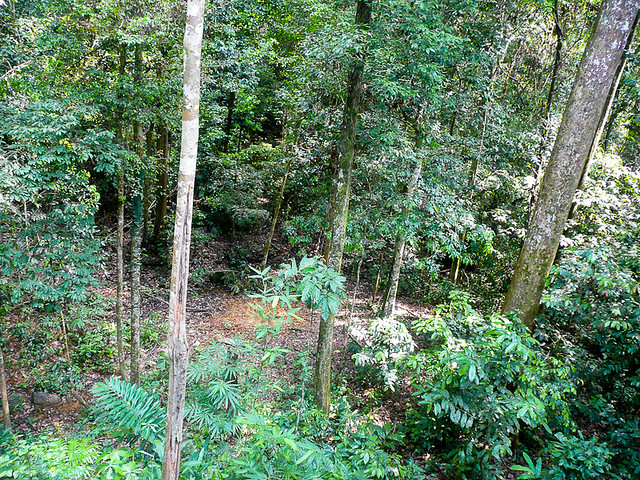 |
| The view from the hide. |
It moved on all fours through the mass of vines and bushes just to
the left of the hide, making its way into the open ground directly
beneath us. Sun bears are not especially large animals, less than a
metre and a half tall, so they couldn't even get on the big rides at
Alton Towers, but they are stocky fellows, very powerful looking with
wide shoulders like enormous pit-bulls. If it stood on two legs it
would probably not even come up above my neck, but since they have
sharp teeth, strong jaws and very large claws you really wouldn't
want to tangle with one. Our bear pounded his claws into the earth
directly below us, digging up something or other, and we leaned out
of the window and tried to get a good photo of it.
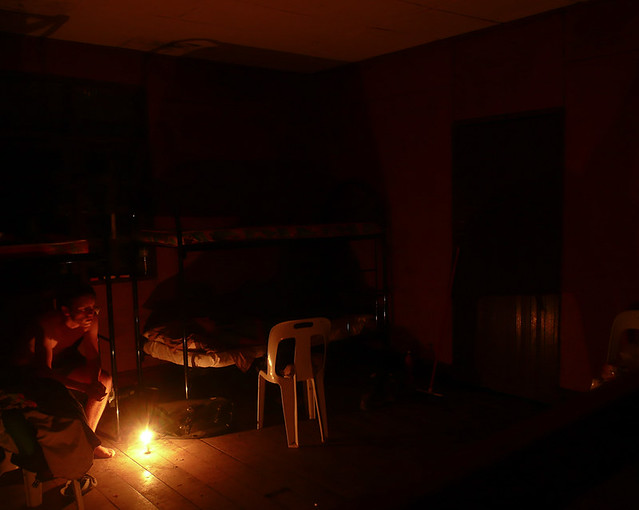 I wondered just then what would happen if it looked up and saw us,
and my heart began thumping. The two of us, over the moon in one
sense, were suddenly tense as anything and tried to keep as quiet as
possible. We didn't think sun bears were known to attack people, but
when you're out in the middle of a rainforest with no-one else
around, you really don't want to chance anything, so we kept as quiet
as we possibly could. This was probably a good move on our part, as
we were later to learn they are notoriously aggressive and will
attack people without provocation.
I wondered just then what would happen if it looked up and saw us,
and my heart began thumping. The two of us, over the moon in one
sense, were suddenly tense as anything and tried to keep as quiet as
possible. We didn't think sun bears were known to attack people, but
when you're out in the middle of a rainforest with no-one else
around, you really don't want to chance anything, so we kept as quiet
as we possibly could. This was probably a good move on our part, as
we were later to learn they are notoriously aggressive and will
attack people without provocation.
The bear moved under the hide and out of view. The light was waning
rapidly, and the shadows of the jungle were transforming the place
into blackness. Where had the bear gone? We crept over to the door,
undid the puny little bolt, and peered outside. We could hardly see
anything in the darkness, so I shone my torch down the steps to make
sure the bear wasn't climbing up them. Just then an almighty clatter
sounded right beside us, and we leapt back with a shriek. I shone the
torch at the sound, and there was the broom lying on the floor where
it had just been blown over over.
We were jittery as anything, shining the beam all around us, and edging back through the doorway. Just then there came a thunderous wham as something heavy collided with the metal roof of the hide. We ran inside and closed and bolted the door. Bang! There it was again. Bang, bang!
After a few intense seconds we realised it was not a blood thirsty
bear beating its claws against the roof, it was just the seeds or
sticks from an overhanging tree being blown off by the rising evening
wind. A relief, no doubt, but it was incredibly loud and it kept on
all night. Wired from the adrenaline of seeing a bear prowling around
right outside our hut, we would both visibly flinch and our hearts
would pound every time the sound came, like a gunshot through the
still candlelit cabin. Bang! Before we turned in for the night
we came up with a bear-at-the-door action plan, which involved
retreating into the loft, or fighting it off with a camping stove
flame thrower. We slept dreadfully that night.
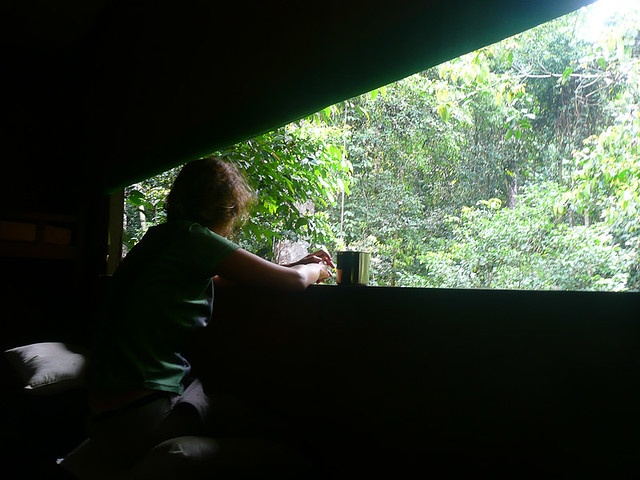 The next day we dozed during the quieter morning, and then sat
around alternately reading and keeping watch on the woodland before
us. During the afternoon a deer came cautiously into view to get a
drink from the water; striding slowly and carefully, eyes constantly
alert to the foliage around it, but luckily for us not to the two
tourists snapping photos in the high hide above.
The next day we dozed during the quieter morning, and then sat
around alternately reading and keeping watch on the woodland before
us. During the afternoon a deer came cautiously into view to get a
drink from the water; striding slowly and carefully, eyes constantly
alert to the foliage around it, but luckily for us not to the two
tourists snapping photos in the high hide above.
As the daylight sunk away and the piercing shriek of the night
chorus picked up, we heard a scrabbling in the leaf litter below the
hide, and there came into view a pelanduk, a tiny little deer that
you could hold in your hands. This guy was as skittery as us the
night before, freezing at the slightest movement, and finally bolting
as our camera shutter clicked. Only very cautious herbivores make it
in Taman Negara, sun bears are noisy as hell, but they've got big
claws so I guess that works out for them.
We were used to the nocturnal racket by now, and even the sporadic
whamming of hard seeds against the tin roof would only occasionally
make us jump out of our skin, so we climbed into bed soon after our
sighting of the tiny deer, and settled down for the night.
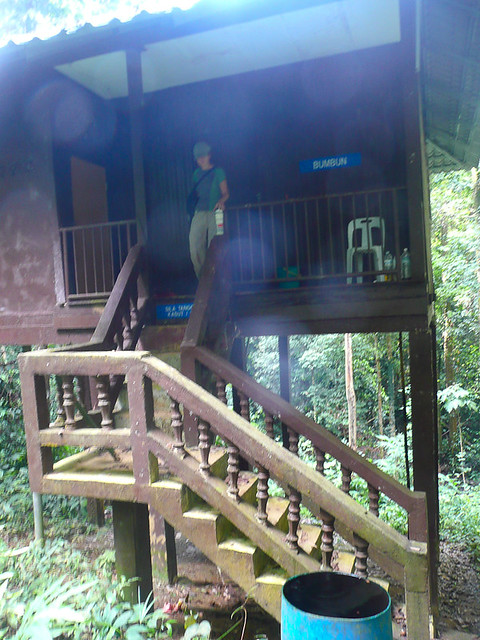 |
| The steps leading up to the hide. |
The jungle still had one scare in store for us, and once again our
nervous brains and ears would spectacularly exaggerate it for us. The
night before I had set a small trap on the stairs to warn us of any
approaching sun bears during the night. A broom lay between the two
bannisters, and balanced upon it, and against one of the steps was a
plastic bucket. The bear clambers up, knocks the bucket off in the
process, and we have fair warning to shit ourselves and clamber into
the loft. On the second evening we had cooked up a delicious dhaal
for dinner, and no doubt the smell had wafted around through the
trees for miles, and perhaps sun bears are quite partial to a bit of
Indian cuisine, especially when you've been eating jungle bugs off
rotting bark all evening. Certainly the thought had crossed my mind
that cooking up a delicious smelling meal when there were bears
around might not be the greatest of ideas, but we had to eat, and the
dhaal was delicious so any misgivings were forgotten as we guzzled it
down.
However, as we lay in bed that night there came the unmistakable
clatter of the bucket tumbling down the steps. We both turned and
looked at each other with wide eyes. From right outside the door came
the sound of a large animal sniffing and scrabbling around. Our
hearts were in our throats. I crouched down and shone the torch under
the gap at the bottom of the door to see what I could see, but
instead of seeing the sharp claws of a terrifying bear, I saw the
green glint of the bucket, still balanced there at the top of the
stairs. Something wasn't right. We flung open the door and watched as
the source of these bear-like noises – a small rat - dashed off
into the toilet, leaving the plastic bottle it had been chewing
rattling around on the floor like a... well... like a large bucket
clattering down some stairs.
 |
| A mole cricket |
We shut the toilet door on the rat, and climbed into bed. “Just
make sure you don't forget it's in there.” Liv said. Of course, I
did. And at 3am I hurried outside, barely awake and desperate for a
poo, and was startled to my senses as I opened the door to find a rat
standing there on its hind legs to greet me. My nocturnal toilet was
spent alternately shining my torch behind me to make sure the rat
wasn't about to scuttle out from behind the water tank, and watching
the black, shifting shadows of the jungle ahead to make sure no
bears, or anything else, turned up and caught me with my trousers
down.
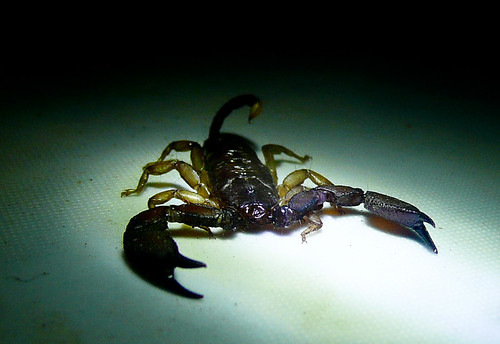 |
| A scorpion from our bathroom. It may look pretty scary, but this one was only a few centimetres long. |
We headed back the next morning, after two very spooky, but very
rewarding nights out in the jungle. As well as seeing the bear, and
the two kinds of deer, we had seen many large bats, some of which had
even flown in through the window and fluttered around the room. And
on the second night a delightfully insane looking mole-cricket
dropped in to keep us company. With its head of a prawn and arms of a
mole it is one of the gnarliest looking creatures I know.
We spent a couple more nights in our chalet back at the main
entrance, enjoying the luxury of a comfortable bed in relative
silence and without large predatory mammals wandering around outside,
although we did find a scorpion in the bathroom.
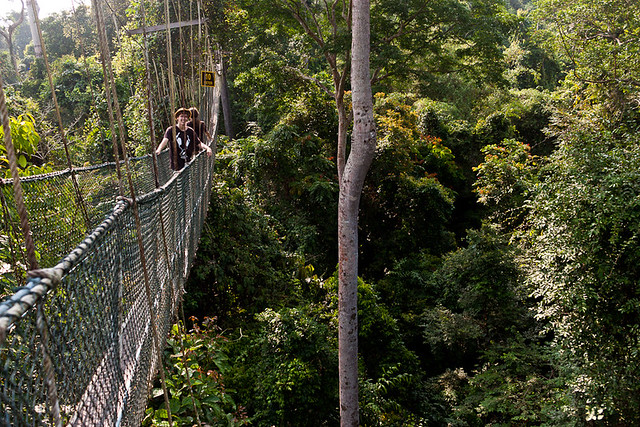 |
| The canopy walk |
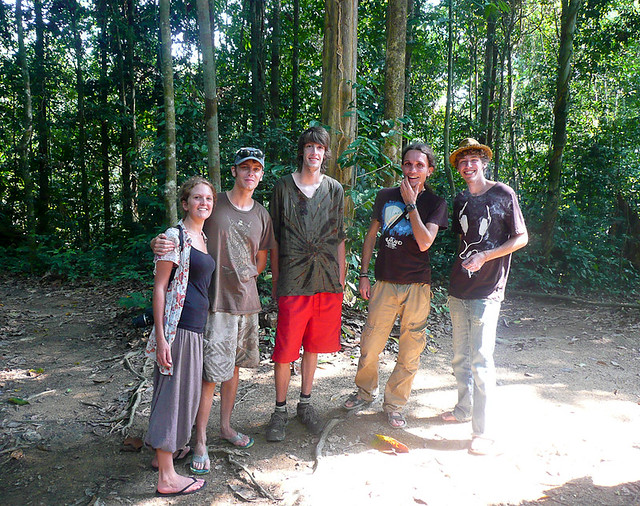
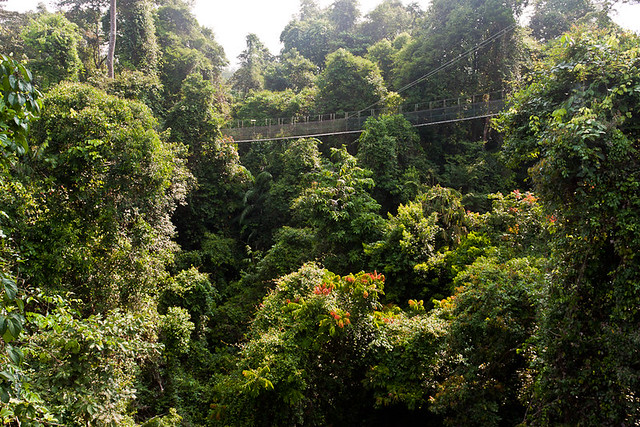
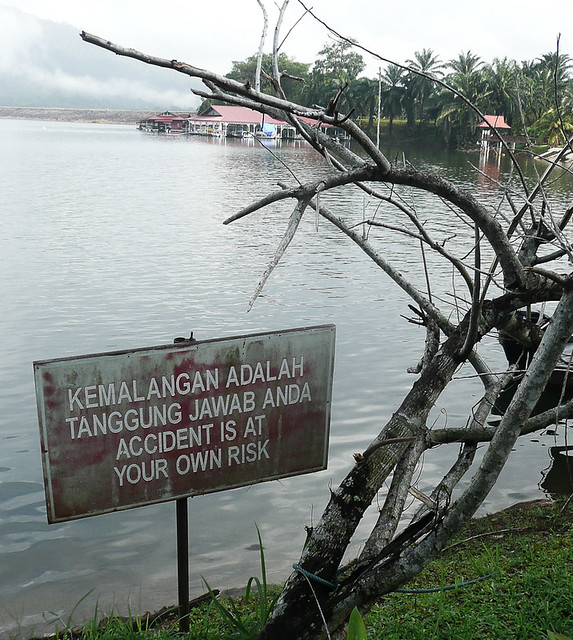

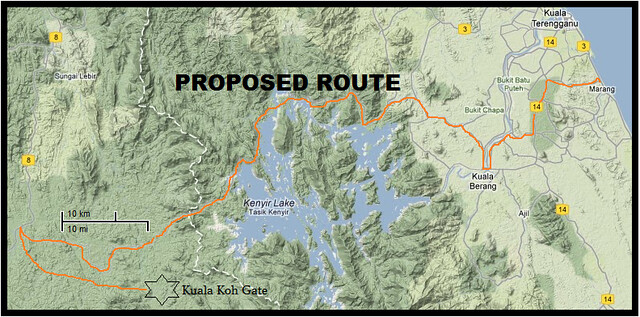


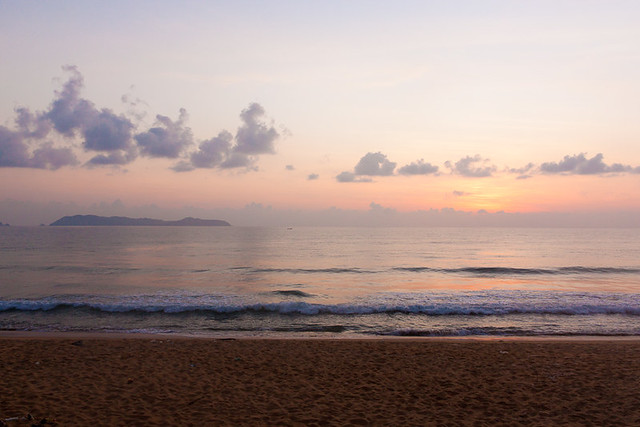


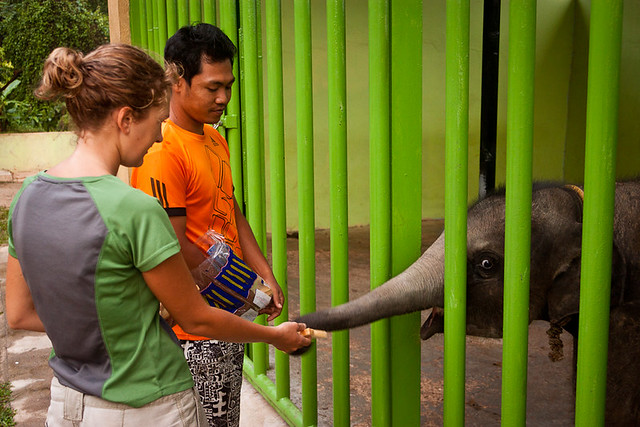
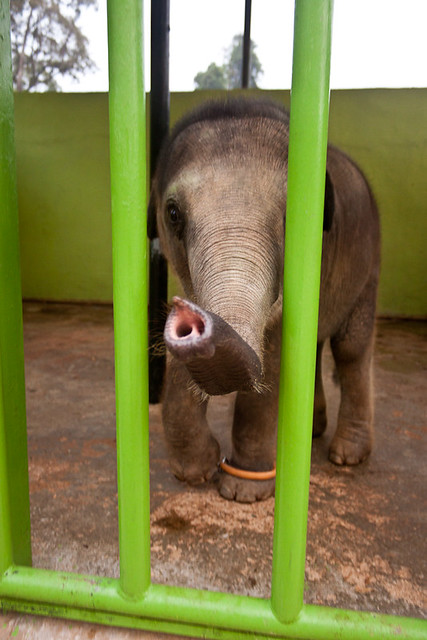

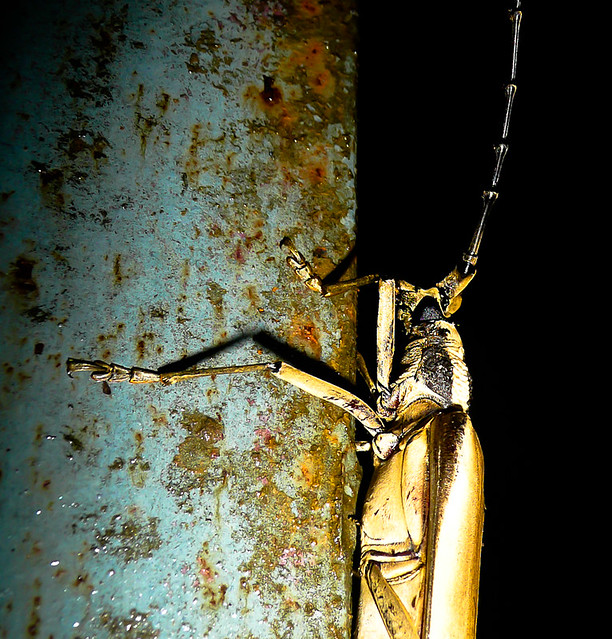

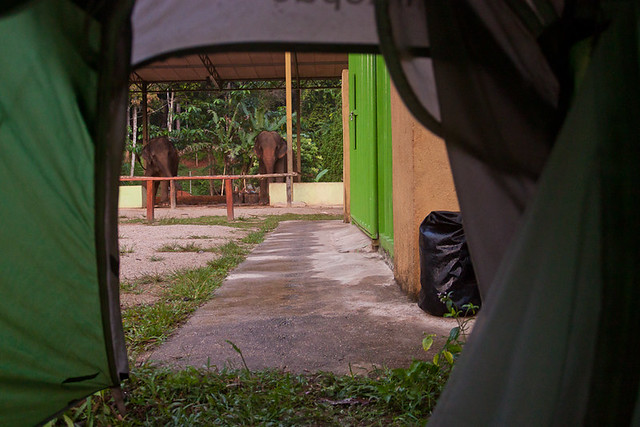
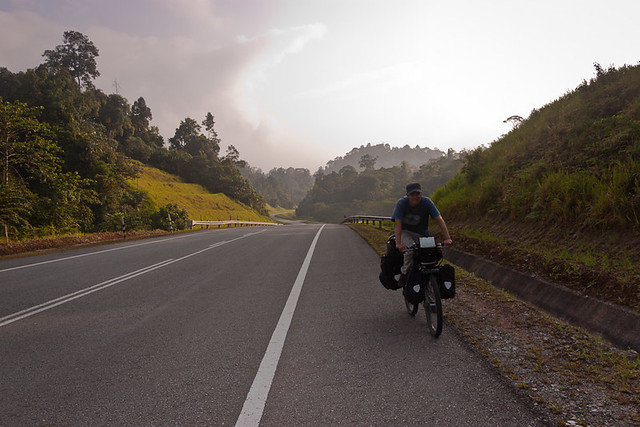
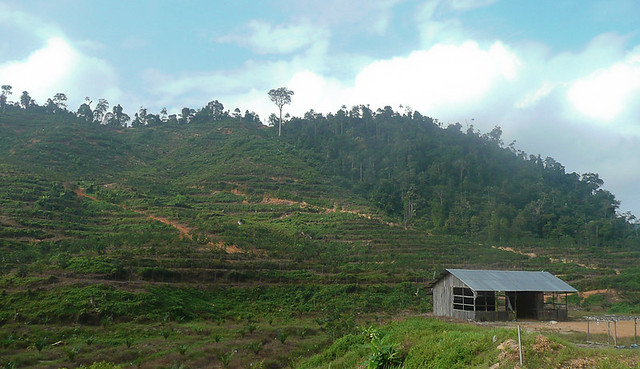
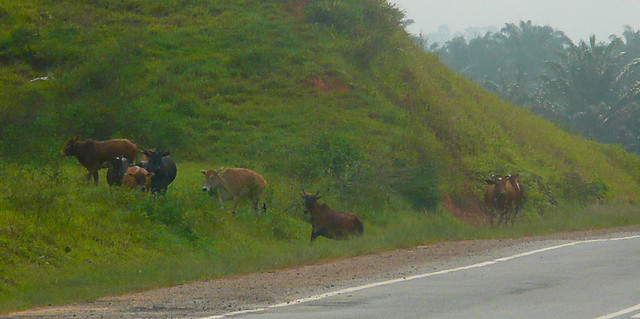

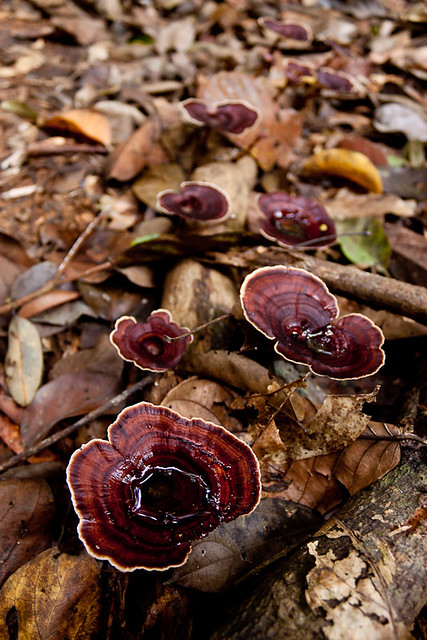






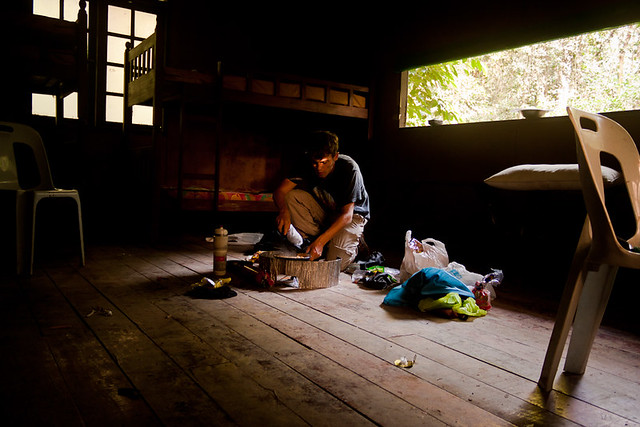
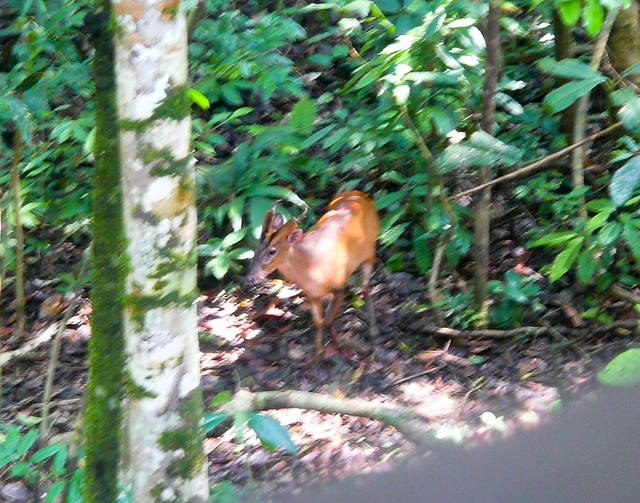
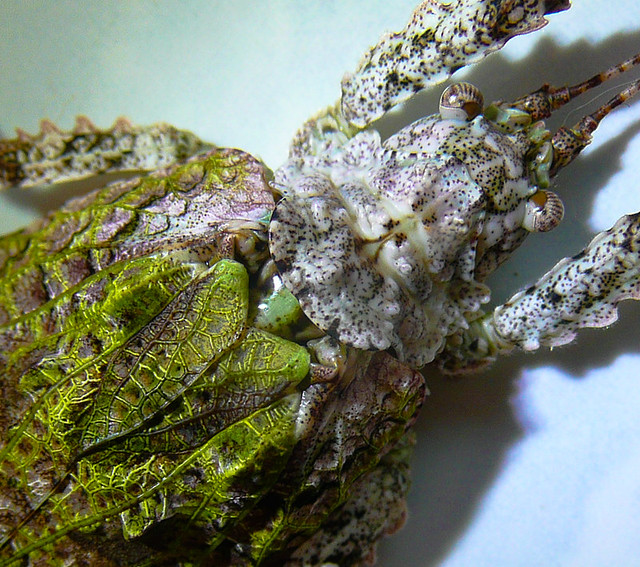
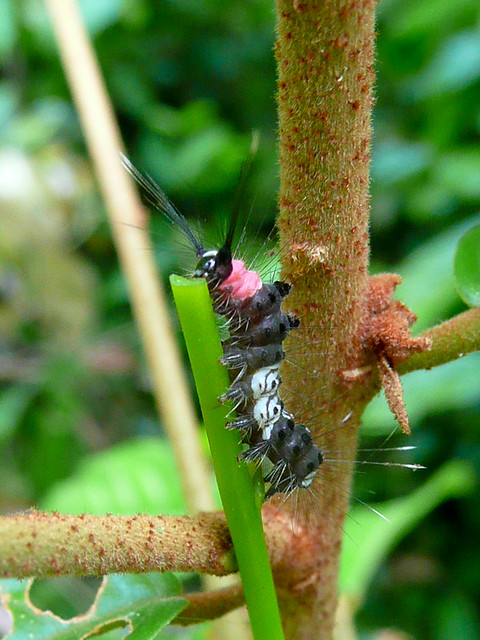
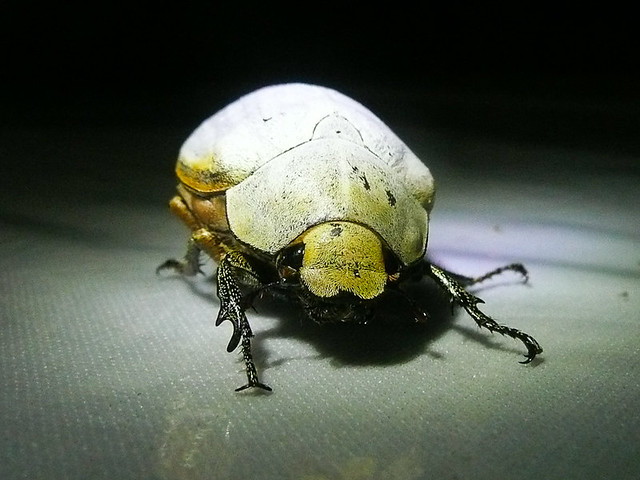


Just amazing!
ReplyDelete